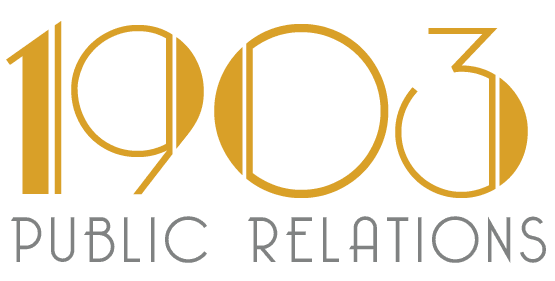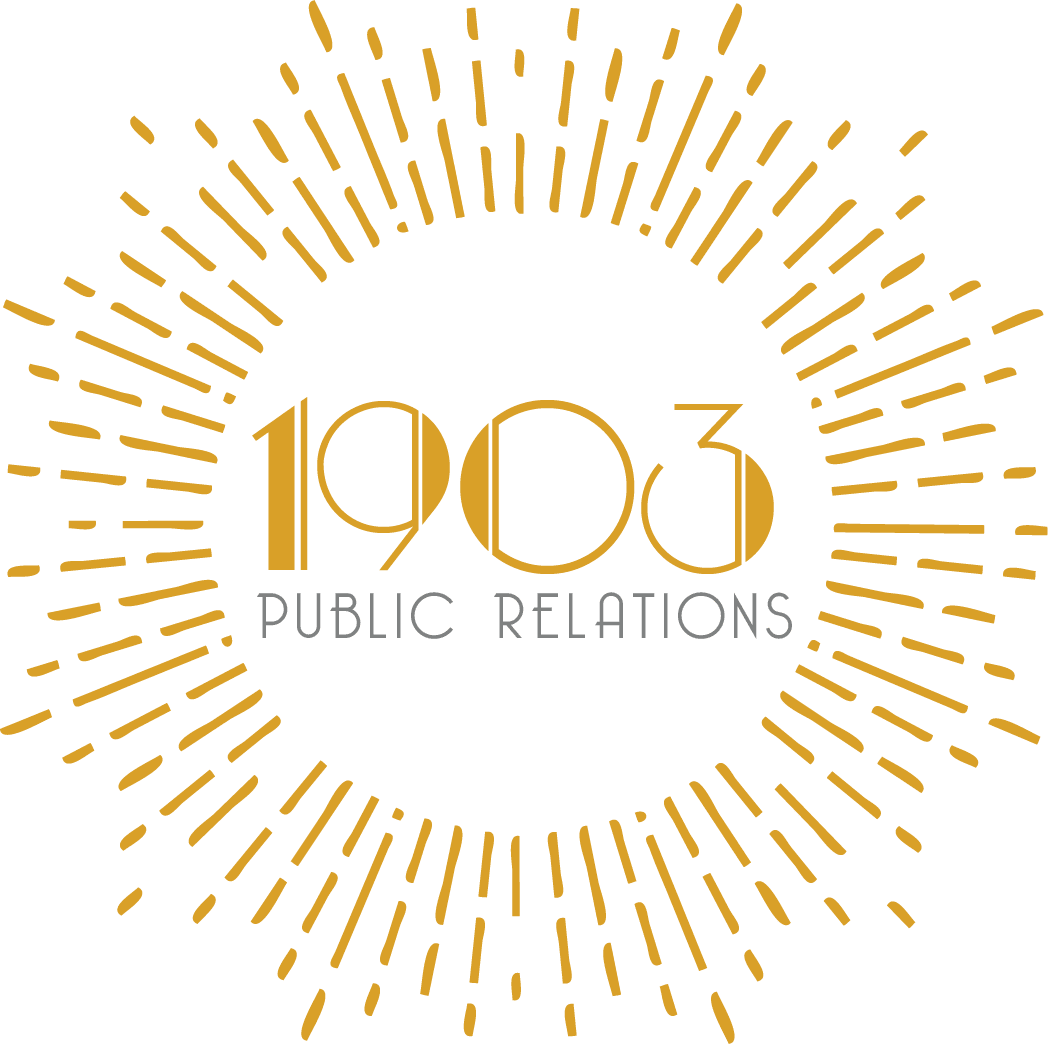By: Grace Decicco, 1903 Public Relations
Businesses outside the communications and media space may be unfamiliar with the common jargon thrown around by PR professionals. Whether you are hiring someone to manage these necessary operational functions or outsourcing that work to an external agency, a foundational understanding of the lingo can help. Here’s a quick glossary of the top 20 words that you are likely to encounter to help you communicate with your teams.
Top 20 PR Terms:
- Media Relations: When a PR professional interacts with reporters/journalists/editors to secure media coverage on behalf of a company. This often will include reaching out (via phone or email) to reporters with story ideas or for inclusion in stories being written.
- Media Training: Educating spokespeople for a company on best practices for media interviews. These training can include: how to respond to reporter questions, appropriate dress for an interview, body language coaching, and other useful tools that will help spokespeople communicate the message they are trying to convey.
- Press Release: A formal statement released by a company with factual information and/or updates. Some press releases are issued on company news, others fulfill legal obligations for communicating with shareholders/communities. Press releases can be shared via a newswire service, or published on a company website.
- Newswire (a.k.a. The Wire): A distribution service that pushes press releases into newsrooms. Reporters decide if the news is of interest to their audience and can publish the excerpts from the press release or the release in its entirety. Newswires expand the potential reach of a press release.
- Circulation: The number of readers, viewers or subscribers to a media outlet.
- Reach: The amount of people that are exposed to a specific piece of content.
- Thought Leadership Articles/ Contributed Articles/ Op-Eds: Articles written by individuals who aren’t regular reporters for a publication. This can include executives or industry experts with unique knowledge on the topic being discussed.
- Pitch: The short, compelling story idea that PR professionals send reporters to secure their interest in covering a topic.
- Syndicated Article: An article that is republished by a source that didn’t create the original content. Large national publications like the Associated Press and Forbes are frequently syndicated and the syndicating publication will give attribution to the originator.
- Paid Media: Any content that is paid to be published on a third-party outlet. This can include sponsored articles in publications, advertorials or speaking spots at events.
- Earned Media: Any media that does not include a fee to get the content published. The final product is not approved by the participating companies and can’t be changed due to dislike of the content.
- Owned Media: Any media that is the property of a business. This can include websites, social platforms, webinars, and blog posts.
- Boilerplate: A brief description of a company – normally one paragraph that describes what a company does and who they are.
- On-The-Record/Off-The-Record: Terms used by reporters to indicate if the person being interviewed will be quoted in resulting coverage. On-the-record informs the interviewee that anything they say can be included in a story. Off-the-record means the reporter will use what they say but the source won’t be named in a story. Always assume conversations with reporters are on-the-record unless otherwise specified.
- Exclusive: Providing one media outlet the only details on a story so they can cover the topic more in-depth than any other outlet. Offering an exclusive to a journalist is a promise that they will be breaking the news when their story is published.
- Embargoed News: A promise from a reporter to hold news shared with them until a designated time/time. Embargoed news allows reporters the opportunity to draft their story in advance of the agreed date/time and no one outlet has the advantage of publishing their story first or breaking the news.
- B-Roll: Video footage played during interviews to add visual interest to a story – instead of just showing talking heads. This footage can be recorded by the company or the publication but is done before an interview is published.
- Editorial Calendar: A calendar that directs advertisers to specific months/issues that will be relevant to their audience so they can buy ad space accordingly. PR professionals use editorial calendars as a guide to what outlets will be covering for the year and to pitch their clients for inclusion in those pre-planned stories.
- Social Media Kit: Digital materials such as logos, branding information, pre-approved language, headshots, suggested hashtags and graphics created for social media use and shared with partners in advance of an announcement.
- Briefing Sheet: A document with all the important information required for a successful interview. A briefing sheet is assembled by PR professionals to prepare spokespeople for media interactions. It provides background on the reporter, the publication, examples of previous coverage, suggested talking points and guidance on how to answer likely questions.
While this is just a few key phrases used by PR professionals, adding these to your vocabulary will help you better understand the media world and efficiently communicate with your team.
Schedule a Meeting Today


